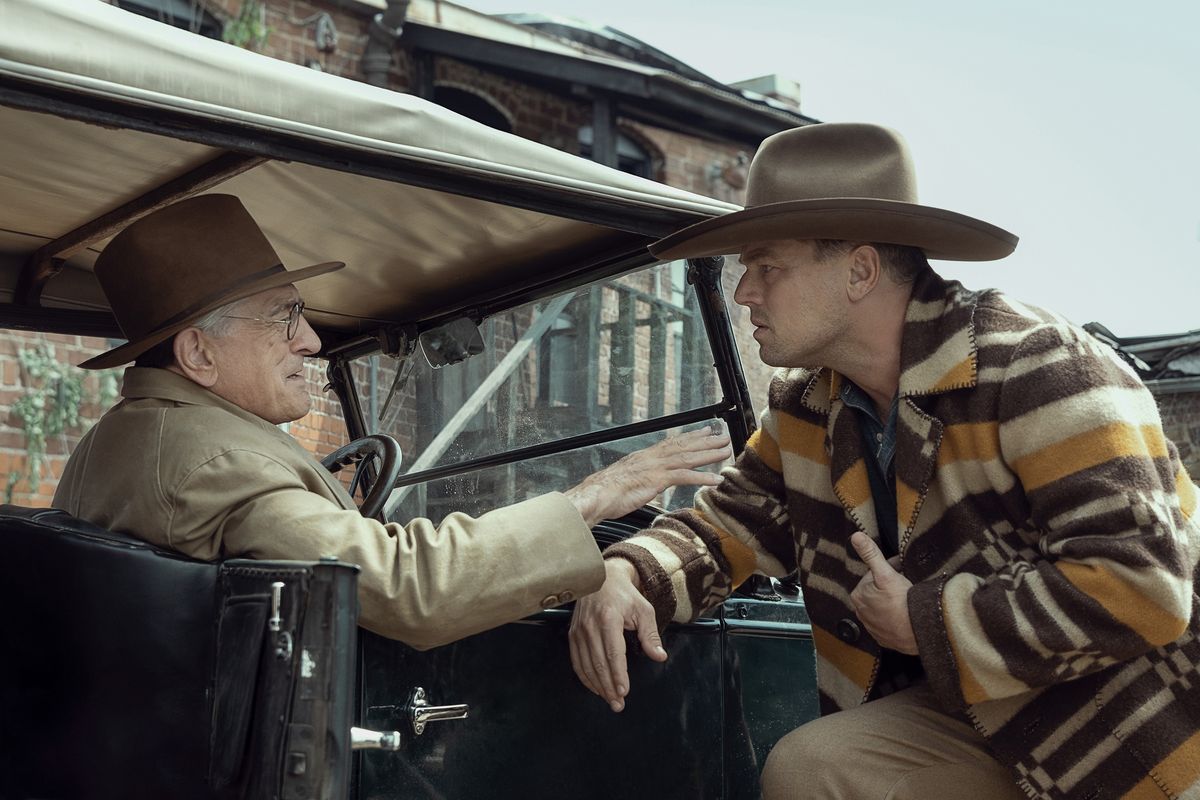Movie Review: Scorcese’s ‘Killers of the Flower Moon’ a vital, daring masterpiece

At the age of 80, with five decades of a sprawling filmography under his belt, American master filmmaker Martin Scorsese has made his first Western. “Killers of the Flower Moon,” is a staggering work, a massive, massively important film from the auteur, in which he uses the tropes and iconography of the Western – a genre that trafficked heavily in harmful Native American stereotypes – to tell the story of a series of heinous crimes committed against the Osage Nation at the hands of white men. In adapting David Grann’s nonfiction book, Scorsese’s approach is classical, but the outcome is radical.
Scorsese doesn’t just make gangster movies, though his gangster movies have helped to define the genre. During his career, he’s made all kinds of movies about all kinds of people and places: comedies, musicals, biopics, period melodramas, mysteries, explorations of faith. But his films always reflect his lifelong fixations on repeated themes: spirituality, violence and the complex relationships between men. “Killers of the Flower Moon” is no different.
The film opens with a religious ceremony as the Osage tribe buries their peace pipe, mourning their old ways for the new. Then black gold – oil – bubbles and bursts from the ground. The Osage become rich, wealthier than anyone in Oklahoma, though they’re unable to access their cash without a white male “guardian.” Scorsese utilizes a silent movie newsreel style to power through background exposition before blending the archival with the immediate and plunging the viewer into 1920s Oklahoma, an era when war bonnets gave way to Stetsons, then fedoras, recreated by production designer Jack Fisk.
In Fairfax, Oklahoma, white cattle rancher William Hale (Robert De Niro) has dubbed himself “The King of the Osage Hills.” When his nephew Ernest (Leonardo DiCaprio) returns from the war, he’s more than happy to nudge him in the direction of Mollie (Lily Gladstone), a wealthy Osage woman with four sisters and head rights to the oil-rich land. They marry, then Mollie’s sisters start dying, along with other wealthy Osage in great numbers, shot, poisoned and blown up. These events were known as the Reign of Terror, a bloodbath that helped to establish the Federal Bureau of Investigation, as detailed in Grann’s book.
Scorsese isn’t interested in telling a murder mystery, the way Grann’s text is laid out. From the beginning we know who’s behind the murders, and the script by Scorsese and Eric Roth isn’t even remotely nuanced about the self-serving evil of some men. The film is an exercise in hoping someone will do something about it, waiting for the cavalry to ride in.
This is an epic tale of deeply intimate violence that rocks one town, one tribe and one family. As her sisters and mother drop dead, and she becomes sicker and sicker with a mysterious “wasting disease,” the dignified and pious Mollie becomes Scorsese’s saint at the center of the story, deified in her suffering(a very Catholic concept). Gladstone is stunning in her restrained performance, embodying Mollie’s physical,emotional and spiritual agony.
“Killers of the Flower Moon” is Scorsese’s Western, but it is also a gangster movie, about men of violence, newly arrived in a lawless land conspiring to murder, steal and amass money and power by any means necessary, weaponizing their whiteness, praying at the altar of capitalism. But there is no God in greed. There is no spirituality in money. There is no salvation in oil.
Cinematographer Rodrigo Prieto brings his floating camera, threading long shots through family homes, calling back to the famous Copacabana shot of “Goodfellas,” and utilizing whip pans to stitch characters and space together. The late Robbie Robertson contributes a score that blends Native American music with Americana and bluegrass, also reflected in the work of music supervisor Randall Poster. Several folk and country musicians populate the cast, including Pete Yorn and Sturgill Simpson, and Jason Isbell delivers a shockingly great performance as Bill Smith, Mollie’s brother-in-law, holding his own opposite DiCaprio.
DiCaprio’s Ernest is tragic but unsympathetic, and DiCaprio layers his performance with strange tics and a perpetual frown, and there is a sad humor in his buffoonery. Ernest loves Mollie, but he is weak. He’s not smart enough to resist those who would use him, but he is no victim, and the tragedy lies in his contradictions. It’s not an easy thing to convey, and DiCaprio throws himself entirely into it.
With “Killers of the Flower Moon,” Scorsese’s work is vital, daring and urgent, and he grapples mightily with the racist violence on which this country has been built, also making reference to the Tulsa Race Massacre. He’s always been a dynamic, invigorating filmmaker and here he is just as bold as he’s always been. The film is deeply moving, at once sobering and enraging. It is simply an astonishing work, a true masterpiece.